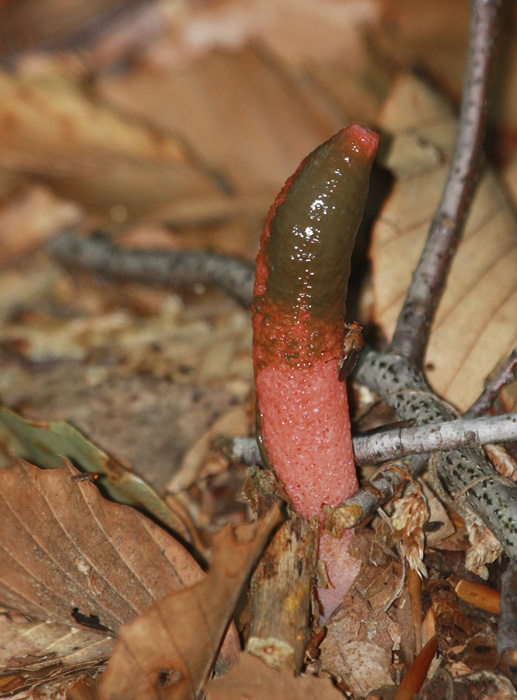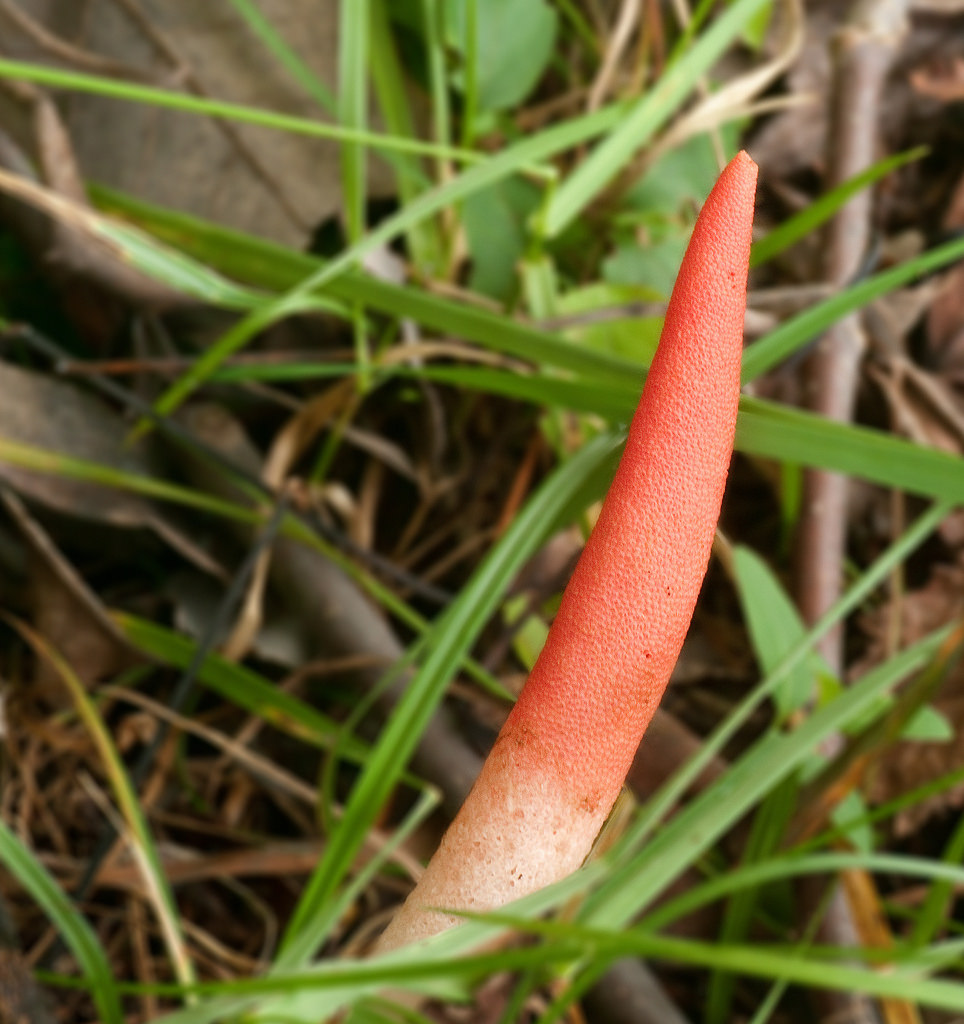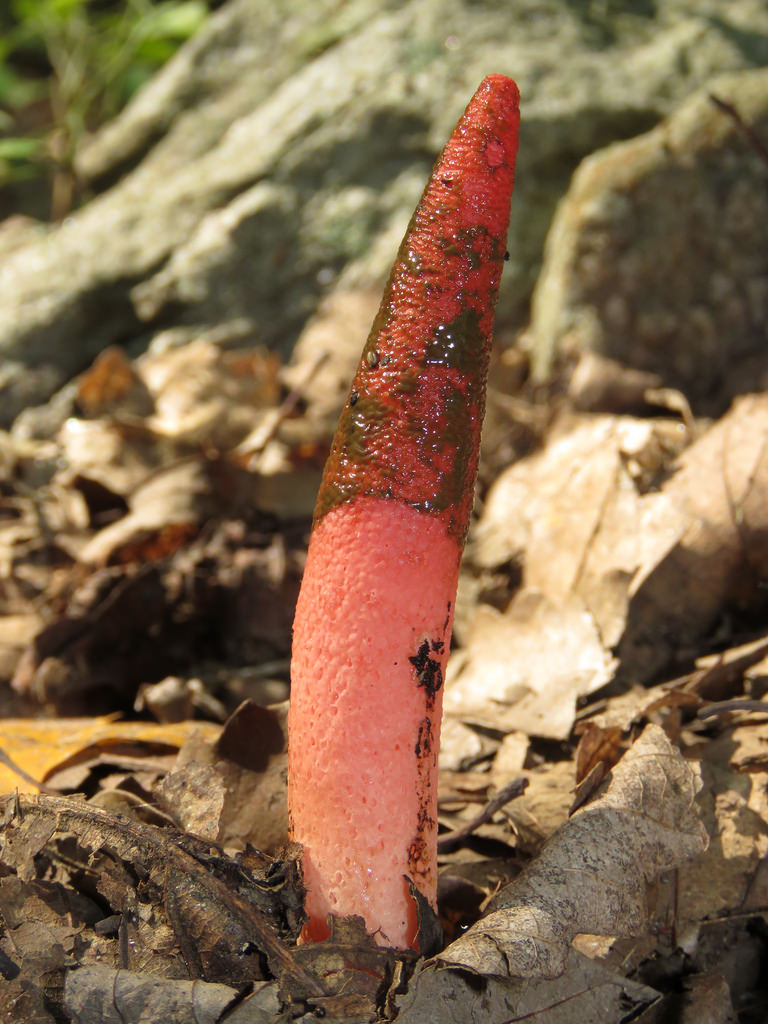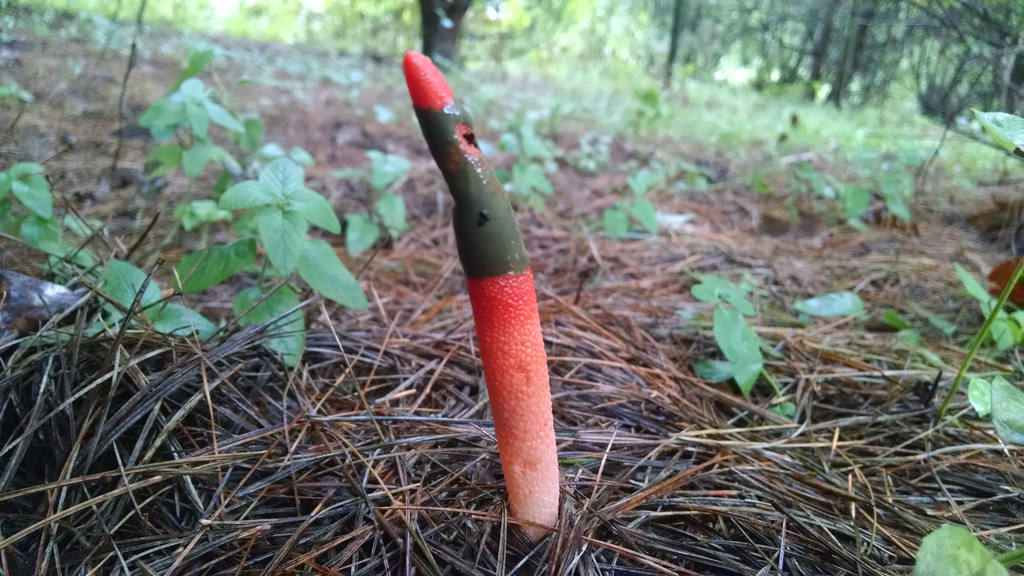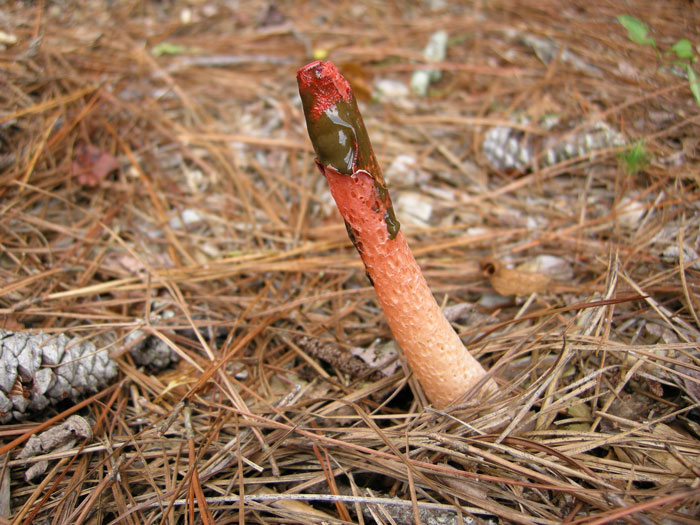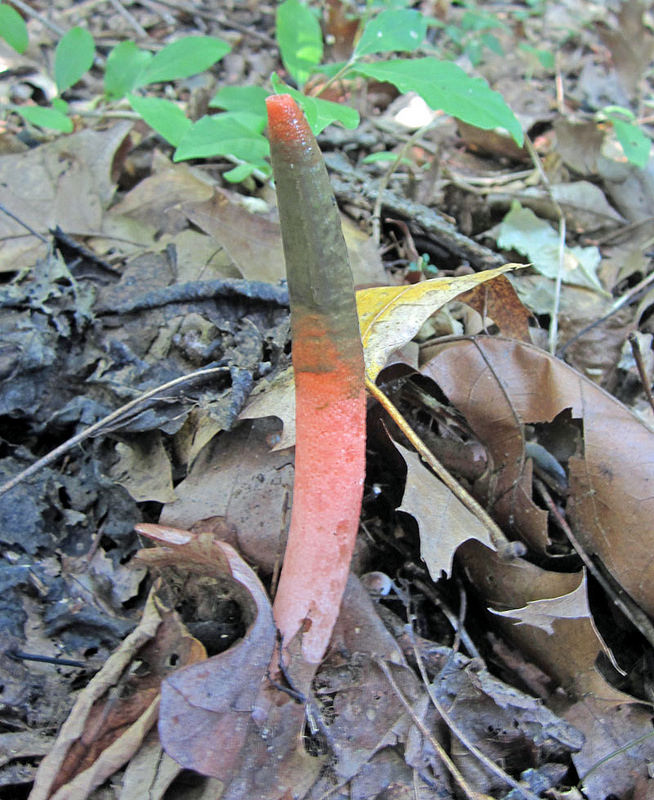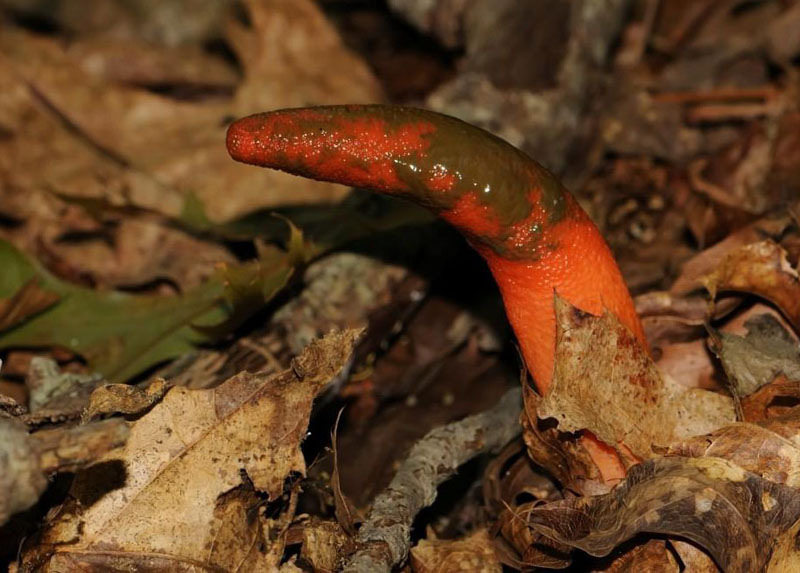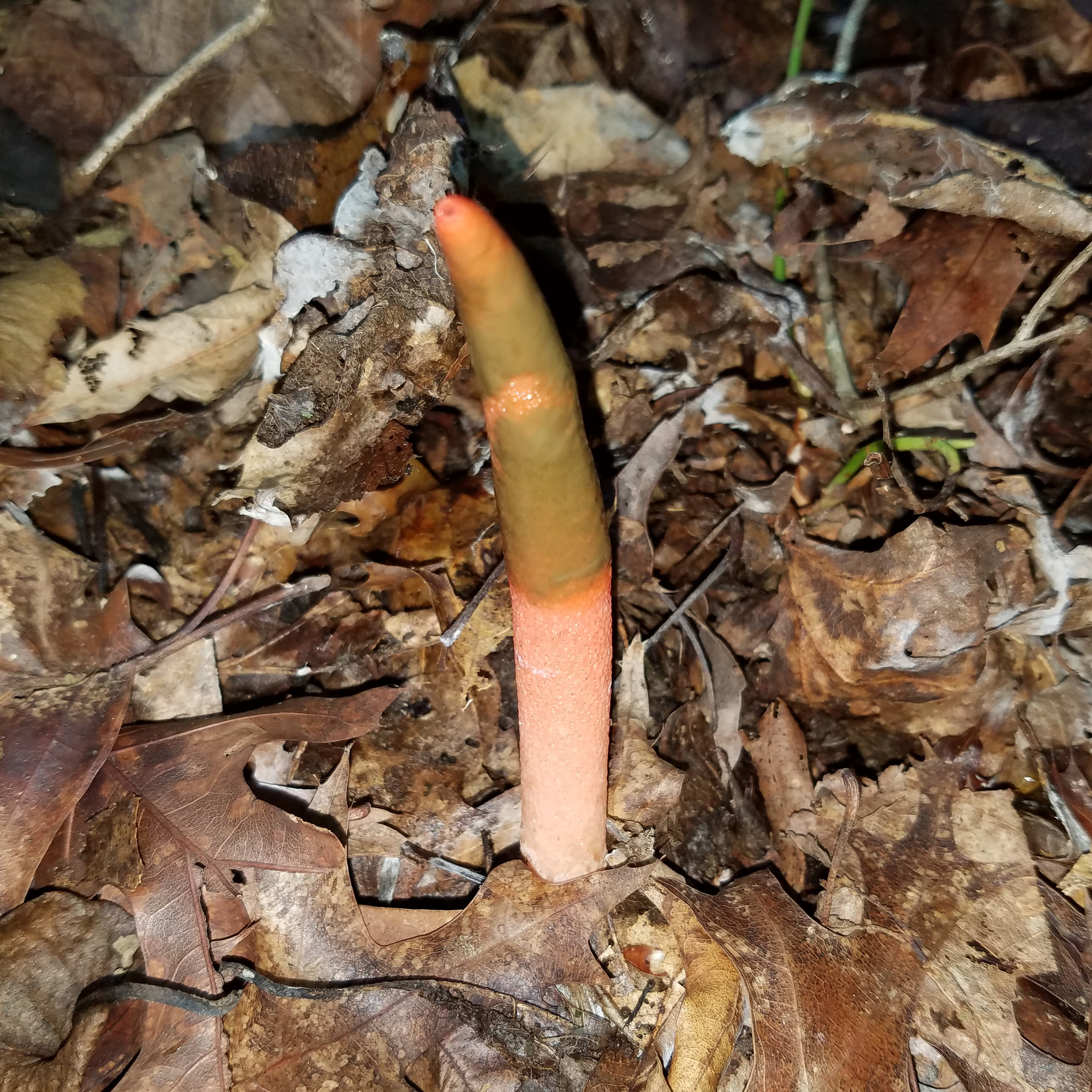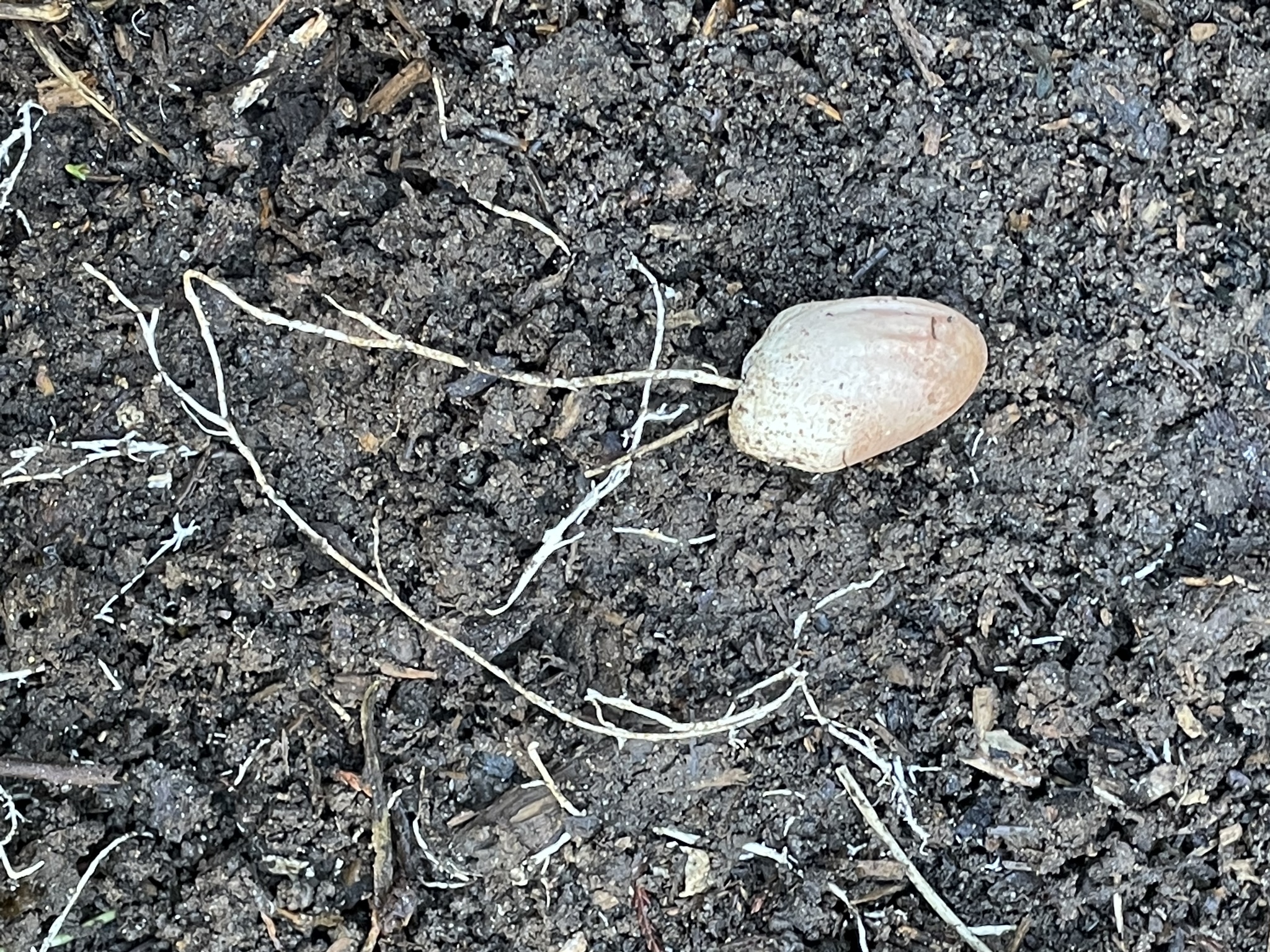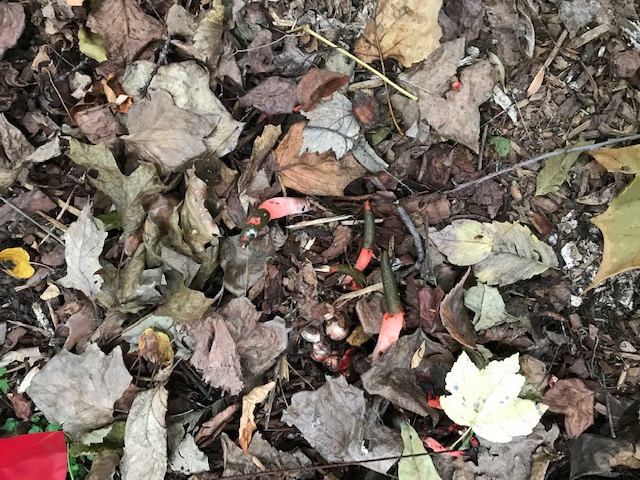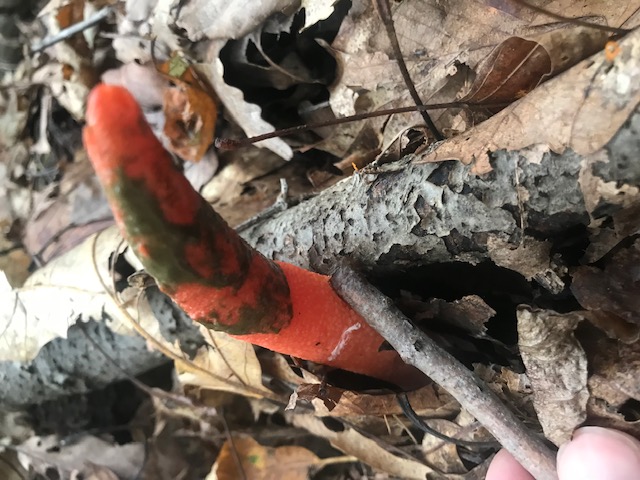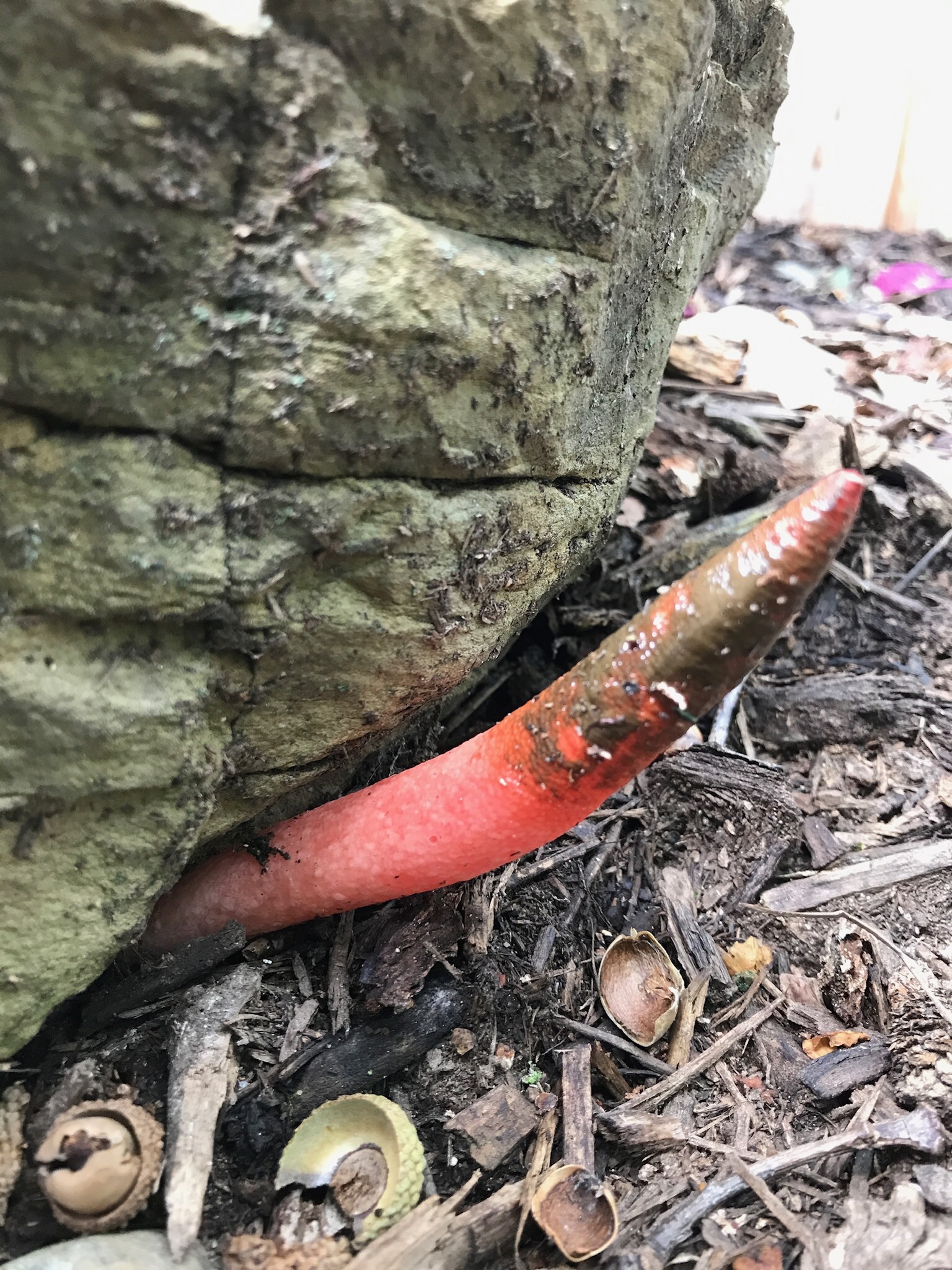

 Synonyms: Devil's Dipstick, Dog Stinkhorn, Headless Stinkhorn.
Synonyms: Devil's Dipstick, Dog Stinkhorn, Headless Stinkhorn.













It is necessary to revisit the Mutinus genus as we are now aware of at least three species, some of whose fruiting bodies can be told with a fair amount of certainty without spore examination. Not all fruiting bodies can be told without spores (and two of the species have almost identical-size spores), but it is possible to make educated guesses for some photos (J. Solem, pers. comm., 2/25/2018). For descriptions of the three similar species, see the Mutinus species page.
Fruiting body: Pale pink to red-orange hollow stalk, tapers upward. Foul-smelling, slimy, olive-green spores cover exterior of upper stalk. Whole body quite ephemeral.
From J. Solem (pers. comm.) (f.b.==fruiting body):
M. elegans - the only current Mutinus species in MBP.
--f.b. below head minutely pitted
--head gradually tapered
--f.b. usually slightly curved
--f.b. sometimes whitish/orangish/orange-red
--slimy head has ragged lower edge
--spores: 4-7 x 2-3 microns
An additional similar reddish stinkhorn is Phallus rubicundus. In the Mutinus genus the gooey spores are found on the main fruiting body, not on a separate 'head.' In P. rubicundus, the 'head' is separate and only attached at the top of the stalk; the lower part usually stands out slightly from the rest of the f.b. The best way to determine that is to slice an entire f.b. lengthwise to see the attachment point, or note a cap whose lower edge seems to stand well away from the stalk.
Most stinkhorns are found on the ground on wood chips or woody debris. The foul odor attracts flies and other insects; they disperse the spores (J. Solem, pers. comm.).
There are 58 records in the project database.
| GA | AL | WA | FR | CL | MO | HO | BA | BC | HA | CE | PG | AA | CV | CH | SM | KE | QA | CN | TA | DO | WI | SO | WO |
